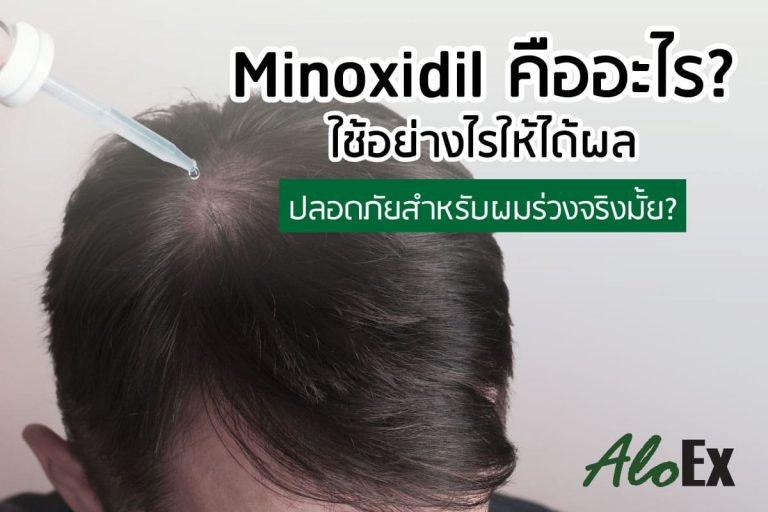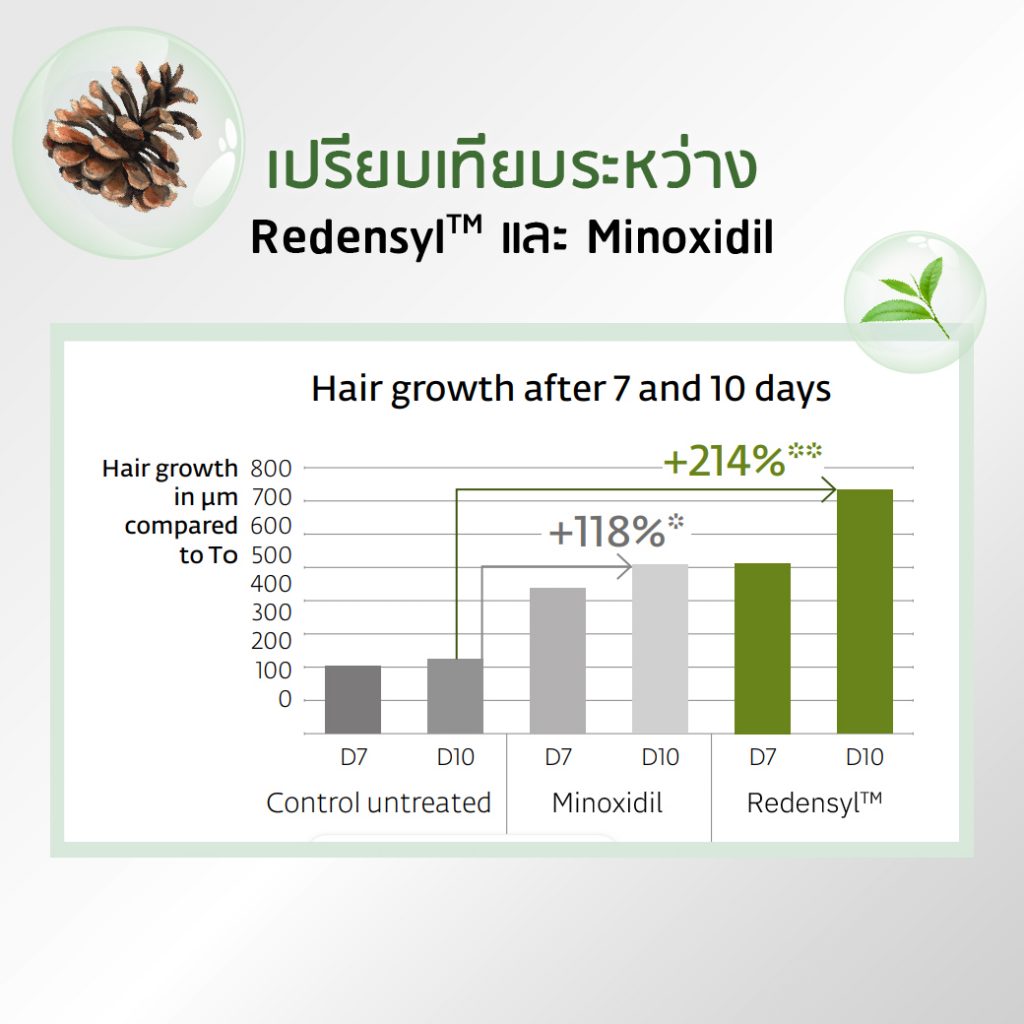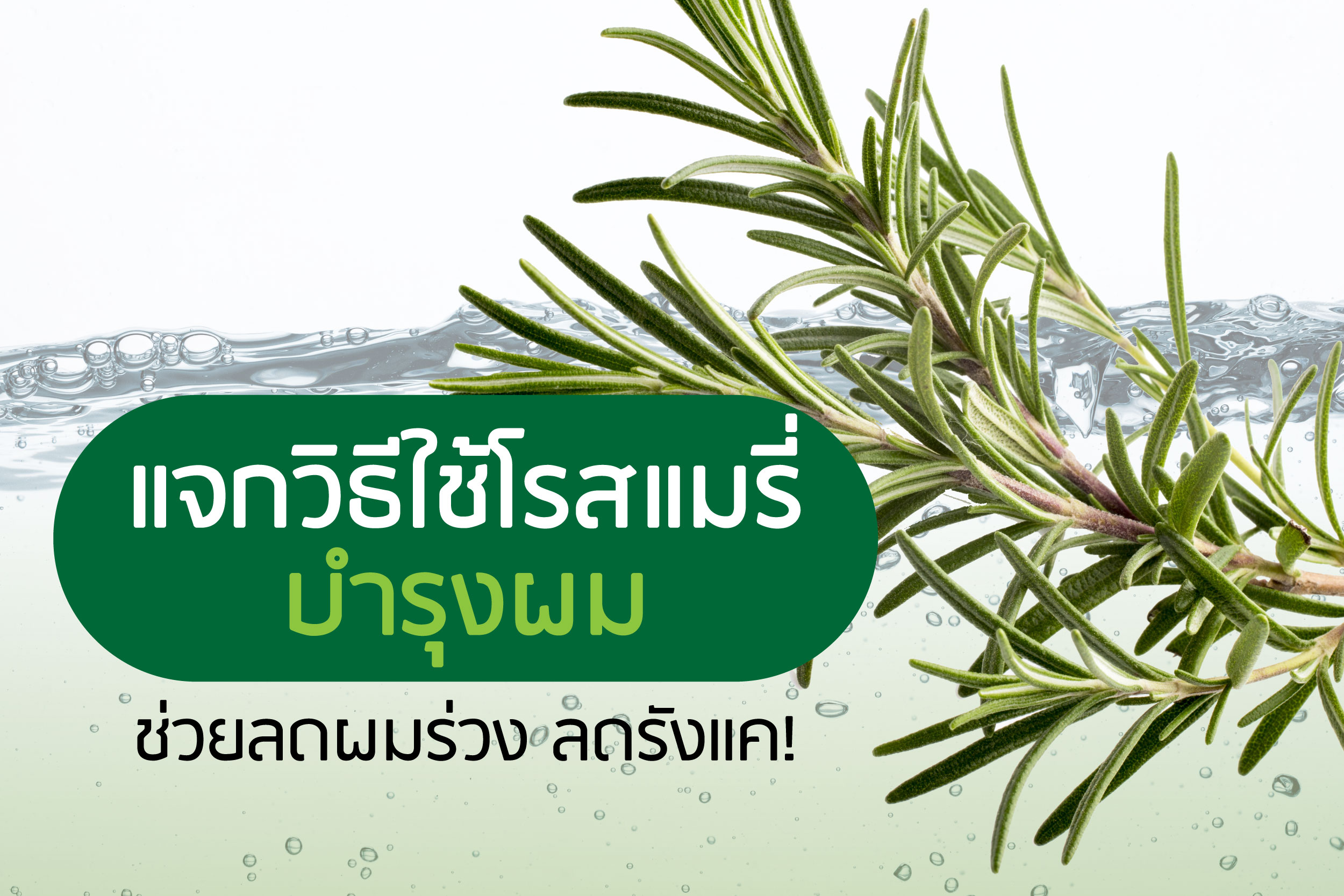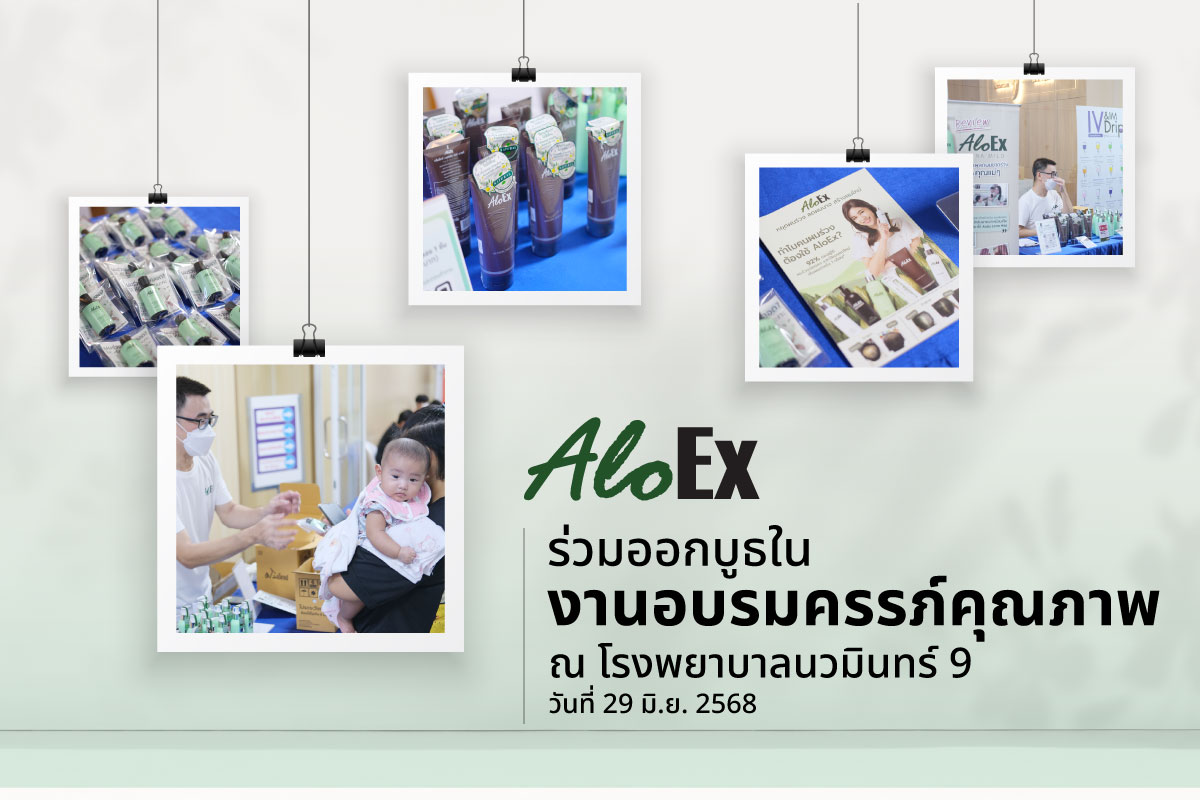Hair is not just about beauty; it is also connected to confidence, personality, and identity for many people. When hair begins to thin or fall out more than usual, many may start to feel uncomfortable, even though they try to tell themselves that “It's just hair loss.” But these small changes can be more impactful than you might think.
In an era of fast-paced lifestyles, accumulated stress, insufficient rest, and pollution, hair loss has become increasingly common and affects both men and women. Many have sought solutions for this issue, with one popular option being the use of minoxidil. But what exactly is minoxidil? Let's take a closer look at this medication, covering its mechanism of action, benefits, limitations, and who it is suitable for or should avoid. We'll also compare it with other research-backed alternatives to help you make the most informed decision for your hair care needs.
What is Minoxidil?
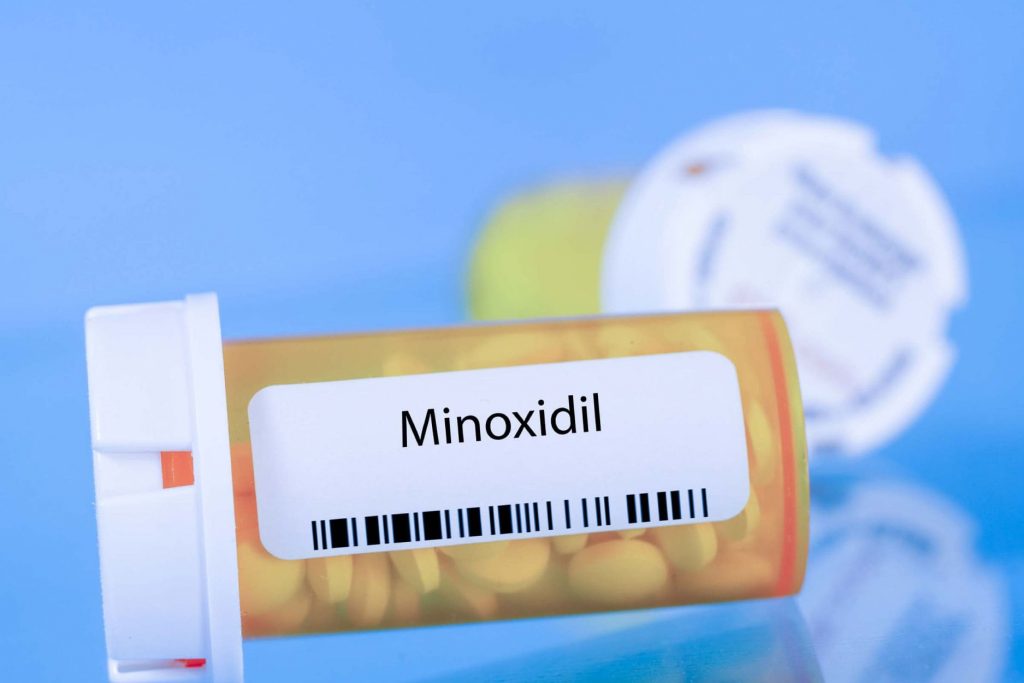
Minoxidil is an active ingredient that has been approved by the Food and Drug Administration (FDA) for the treatment of hereditary hair loss, also known as Androgenetic Alopecia In both men and women, it began as a medication for high blood pressure before researchers discovered its side effect of stimulating hair growth. This led to its development into various hair care products, including topical applications such as liquids and foams, as well as oral formulations.
Why is minoxidil, a blood pressure medication, used to treat hair loss?
Minoxidil Does not change hormone levels DHT (which is the main cause of genetic hair loss) but also take care of external factors by following these methods:
- Vasodilation of the scalp helps increase blood circulation to the hair roots.
- Stimulates hair growth to enter the hair growth phase, or Anagen Phase, more effectively.
- Extend the growth phase of hair follicles and reduce the shedding phase (Telogen Phase), resulting in less hair loss and a fuller appearance.
In summary, minoxidil does not directly address the root cause of hair loss (the hormone DHT) but helps reduce hair loss and stimulate new hair growth by directly expanding blood vessels in the scalp.
What types of hair loss can be treated with minoxidil?
In the field of dermatology, minoxidil is suitable for individuals experiencing genetic hair loss, particularly those who have noticed thinning hair in the crown or hairline area.
- A man who is beginning to experience receding hairline or thinning at the crown.
- A woman with thinning hair spread across her entire scalp.
- Individuals with a family history of hereditary hair loss

What types of hair loss should not use minoxidil?
Not recommended for use in individuals experiencing hair loss from causes other than genetic hair loss without consulting a physician, as minoxidil does not address the underlying causes, including:
- Hair loss due to skin diseases (e.g., fungus, dandruff, or psoriasis) must be treated before inflammation or infection. Otherwise, minoxidil may cause further irritation to the scalp.
- Hair loss from autoimmune diseases For example, patchy hair loss (Alopecia Areata), SLE (Systemic Lupus Erythematosus). People whose hair falls out due to autoimmune diseases will require specialized treatment with immunosuppressive medications.
- Hair loss due to malnutrition For example, iron or protein. Using Minoxidil alone will not be effective if the body still lacks essential nutrients necessary for hair growth.
- Postpartum Hair Loss Due to insufficient safety data on the use in pregnant or breastfeeding women, its use is not recommended.
How many types of minoxidil are there? How do they differ?
1. Topical minoxidil can be divided into two main forms:
- Topical Solution The formula is clear and lightweight, containing alcohol and propylene glycol to aid absorption. It typically has a concentration of 21% (for women) and 51% (for men). Some individuals may experience irritation, dryness, or itching at the application site.
- Foam Type Contains no propylene glycol, effectively reducing irritation. Quick-drying, non-sticky formula. Standard concentration of 5%. Popular among men with sensitive skin or those seeking convenience in use.
2. Oral minoxidil is used in cases where topical medication is ineffective or in individuals with severe hair loss. It requires close medical supervision due to potential side effects on the heart, blood pressure, and necessitates regular monitoring.

How to Use Minoxidil Topical Solution
- Dry the scalp thoroughly before applying medication.
- Use the amount as indicated on the label (e.g., 1 ml for liquid formulas).
- Apply to specific areas where hair growth is desired, no more than twice a day (morning – evening).
- Wash your hands after use and avoid contact with the face.
- You should wait at least 4 hours before washing your hair.
- Results will begin to appear after continuous use for 3–6 months.
Side effects of minoxidil
- Itching, burning, or irritation of the scalp
- Hair loss increases during the first 2–6 weeks (known as the Shedding Phase).
- Hair growth in inappropriate areas (such as the face or neck) if the medication drips down.
- Symptoms of rapid heartbeat or swelling may occur in cases of excessive absorption or overdose.
Precautions Before Using Minoxidil
- Do not use on broken, infected, or reddened skin.
- Can be used with other shampoos and serums, but those products must be gentle and free from ingredients that may irritate the scalp, such as strong alcohol or sulfates (Sulfate), etc.
- If I stop taking the medication, will my hair fall out again like it did before I started using it?
What are the alternative extracts that can replace Minoxidil?
For those who cannot use minoxidil or are looking for alternative options with clinical test results or academic studies to support their effectiveness, you can choose hair loss reduction products that have Active Ingredient The following are the components:
- Capixyl™ An active ingredient blend combining peptide (Acetyl Tetrapeptide-3) with red clover extract helps inhibit the 5α-Reductase enzyme, both Type 1 and Type 2, which are the causes of hormone-related hair loss. DHT is ready to promote new hair growth by enhancing the activity of stem cells at the hair follicle root (dermal papilla). This is based on laboratory test results comparing the effects of minoxidil and Capixil™ on hair follicles collected during the growth phase (anagen phase) over a 7-day period. The results showed that the hair roots treated with minoxidil increased in length by 52%. While the length of hair roots treated with Capixil™ increased by up to 156%, which is three times greater than Minoxidil.
- Redensyl™ Active ingredients extracted from green tea leaves and pine plants work by stimulating hair follicle stem cells and fibroblasts. The key components are DHQG and EGCG2 from green tea leaves, which help increase cell division rates and stimulate the hair cycle to enter the Anagen phase more quickly. Redensyl™ has been clinically tested and compared with Minoxidil, showing that Redensyl™ can stimulate hair follicle growth nearly twice as effectively as Minoxidil within 10 days.
- Procapil™ The extract derived from olive leaves and citrus plants contains three key compounds that help strengthen hair roots, inhibit the hormone DHT, and promote blood circulation in the scalp. These compounds include Biotinyl-GHK (a peptide), Apigenin (a plant-derived flavonoid), and Oleanolic Acid.
In addition, clinical test results indicate that when used Capixyl™ and Redensyl™ And Procapil™ In a joint 24-week study, volunteers with hair loss experienced new hair growth of 88.91 TP3T, while minoxidil showed results of 601 TP3T.[18]
- Herbal extracts that have been scientifically proven to help reduce hair loss caused by the hormone DHT and promote the regrowth of strong, healthy hair include butterfly pea flower.[1], Thong Phan Chang[1][2], Indian gooseberry[1][2], Rice bran[3], Safflower[1][2], Cowrie Bead[4][5][6], Sarapee[7], Candle branch[8][9][10][11][12] and kaffir lime leaves[1][13][14][15][16][17]
Related Products
References
[1] Kumar, N., Rungseevijitprapa, W., Narkkhong, N.-A., Suttajit, M., & Chaiyasut, C. 5α-Reductase inhibition and hair growth promotion of some Thai plants traditionally used for hair treatment. Journal of Ethnopharmacology, 2011:135(3), 529-535
[2] Stansbury, J. (2016, April 4). Herbal Medicines for Hair Loss. Borealis Naturopathic Health Centre. https://whyborealis.ca/naturopathic/herbal-medicines-for-hair-loss/
[3] Ruksiriwanich, W., Manosroi, J., Abe, M., Manosroi, W., & Manosroi, A. (2011). Inhibition of 5α-reductase type 1 by Oryza sativa bran extract prepared using supercritical carbon dioxide fluid. Journal of Supercritical Fluids, 2011;59(1), 61-71. https://doi.org/10.1016/j.supflu.2011.07.017
[4] Kumar, N., Rungseevijitprapa, W., Narkkhong, N., Suttajit, M., & Chaiyasut, C. (2011). 5α-reductase inhibition and hair growth promotion of some Thai plants traditionally used for hair treatment. Journal of Ethnopharmacology, 145(3), 750–756. https://doi.org/10.1016/j.jep.2011.12.010
[5] Shah, M., Parveen, Z., & Khan, M. R. (2017). Evaluation of antioxidant, anti-inflammatory, analgesic, and antipyretic activities of the stem bark of Sapindus mukorossi. BMC Complementary and Alternative Medicine, 17, 526. https://doi.org/10.1186/s12906-017-2042-3
[6] Waqas, M. K., Khan, B. A., Akhtar, N., Chowdhry, F., Khan, H., Bakhsh, S., Khan, S., & Rasul, A. (2017). Fabrication of Tamarindus indica seeds extract-loaded cream for photo-aged skin: Visioscan® studies. Advances in Dermatology and Allergology, 34(4), 339–345. https://doi.org/10.5114/ada.2017.69314
[7] Morikawa, T., Luo, F., Manse, Y., Sugita, H., Saeki, S., Chaipech, S., Pongpiriyadacha, Y., Muraoka, O., & Ninomiya, K. Geranylated coumarins from Thai medicinal plant Mammea siamensis with testosterone 5α-reductase inhibitory activity. Frontiers in Chemistry, 2020: 8, 199. https://doi.org/10.3389/fchem.2020.00199
[8] Zheng, Y., Hu, Y., Liu, K., Lu, Y., Hu, Y., & Zhou, X. Therapeutic effect of Impatiens balsamina, Lawsonia inermis L., and Henna on androgenetic alopecia in mice. Nan Fang Yi Ke Da Xue Xue Bao, 2019:39(11), 1376-1380. https://doi.org/10.12122/j.issn.1673-4254.2019.11.17
[9] Sadeghinia, A., & Sadeghinia, S. Comparison of the efficacy of topical lawsonia inermis and topical minoxidil in the treatment of telogen effluvium. Natural Products An Indian Journal, 2011: 7(3), 159-162
[10] Rahmany, E., Çakici, A., & Çakir, E. Antioxidant activity and phenolic compounds of Lawson molecule extracted from Lawsonia Inermis (Henna). International Journal of Food Engineering Research (IJFER), 2021:7(1), 1-17. DOI: 10.17932/IAU.IJFER.2015.003/ijfer_v07i1001
[11] Moutawalli, A., Benkhouili, F. Z., Doukkali, A., Benzeid, H., & Zahidi, A. The biological and pharmacologic actions of Lawsonia inermis L. Phytomedicine Plus, 2023: 3, 100468. https://doi.org/10.1016/j.phyplu.2023.100468[12] Dasgupta, T., Rao, A. R., & Yadava, P. K. Modulatory effect of henna leaf (Lawsonia inermis) on drug metabolising phase I and phase II enzymes, antioxidant enzymes, lipid peroxidation and chemically induced skin and forestomach papillomagenesis in mice. Mol Cell Biochem, 2003:245(1-2), 11-22. doi: 10.1023/a:1022853007710
[13] Kumar, N., Rungseevijitprapa, W., Narkkhong, N.-A., Suttajit, M., & Chaiyasut, C. 5α-Reductase inhibition and hair growth promotion of some Thai plants traditionally used for hair treatment. Journal of Ethnopharmacology, 2011:139(3), 765-771
[14] Kang, J.-I., Choi, Y. K., Han, S.-C., Kim, H. G., Hong, S. W., Kim, J., Kim, J. H., Hyun, J. W., Yoo, E.-S., & Kang, H.-K. Limonin, a Component of Immature Citrus Fruits, Activates Anagen Signaling in Dermal Papilla Cells. Nutrients, 2022:14(5358). https://doi.org/10.3390/nu14245358
[15] Latirah, Nugroho P. D. Formulation of Anti-Dandruff Shampoo from Skin Fruit Extract and Press Water Lime (Citrus Hystirx DC.) with Various Concentrations. Sanitas Journal of Technology and Health Arts, 2020:11(2), 136-148 https://doi.org/10.36525/sanitas.2020.12
[16] Nasution, S. L. R., Nasution, A. N., & Nasution, S. W. An Experiment for Extracted Citrus Hystrix Leaf Effectiveness on Pityrosporum Ovale Fungi Growth. In Proceedings of the International Conference on Health Informatics, Medical, Biological Engineering, and Pharmaceutical (HIMBEP 2020) (pp. 291-295). SCITEPRESS – Science and Technology Publications. https://doi.org/10.5220/0010352902910295
[17] Butryee, C., & Kupradinun, P. Antioxidant capacity of Citrus hystrix leaf using in vitro methods and their anticlastogenic potential using the erythrocyte micronucleus assay in the mouse. Toxicology Letters, 2008:180S, S79. https://doi.org/10.1016/j.toxlet.2008.06.505
[18] Karaca, N., & Akpolat, N. D. (2019). A comparative study between topical 5% minoxidil and topical redensyl, capixyl, and procapil combination in men with androgenic alopecia. Journal of Dermatology and Hair Research

